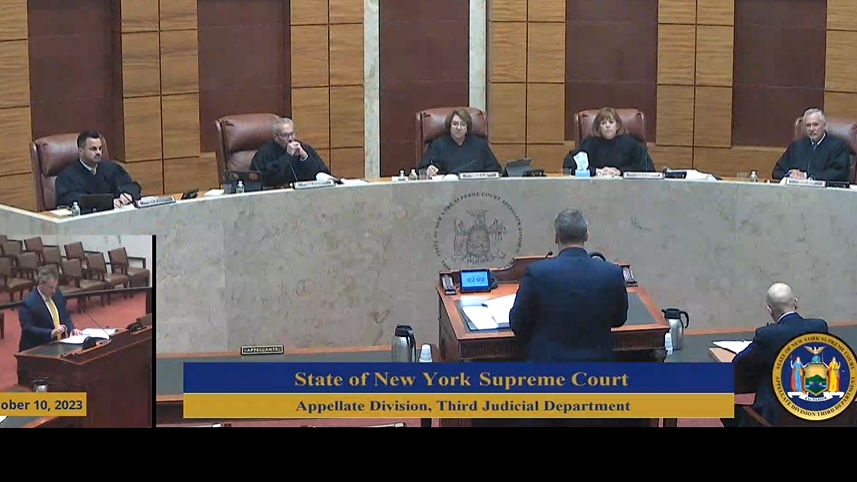Cambridge school district takes fight to keep Indian logo to appeals court
The Cambridge school district says the education commissioner stepped on local control by ordering it to remove its Indian logo, but the state says the image reinforces stereotypes and it is a moot issue.
The Board of Education has been fighting to reverse an order from Education Commissioner Betty Rosa in July 2021 that the district retire its Indian mascot and imagery. After much debate, the board had decided in June 2021 to change the logo.
However, when a new school board took office the following month, the district reversed that decision. Rosa had said in her order that the change was arbitrary and lacked justification.
Subsequently, the commissioner has ordered all schools to retire Native imagery.
Parties for both sides were in front of the Supreme Court Appellate Division on Tuesday.
District: Decision should be local
The district’s attorney, Paul Aloy, said when then-Education Commissioner Richard Mills issued a memo in the early 2000s encouraging districts to phase out the logo, he said communities should begin the discussion on the issue.

“He wanted this to be a local decision. He wanted this to be local dialogue,” Aloy said.
The district made changes to its imagery several years ago to be more geographically accurate to Native tribes, according to Aloy.
Justices asked Aloy about the lack of justification for the board reversing course.
Aloy said the community had a lengthy community dialogue and acknowledged the change in board members.
One of the board members, Dillon Honyous, has Native heritage and was elected to the board on a platform of keeping the logo. He and his grandfather had no issue with it.
“They saw it as a point of pride, a point of honor,” Aloy said.
State responds
The State Education Department’s attorney, Joseph Spadola, said there is overwhelming evidence that use of Native imagery is harmful to Native Americans.
“There is an undisputed body of empirical research showing that Native American mascots have both a detrimental effect on both Native students and non Native students, even when they’re intended to honor Native culture,” he said.
One of the justices asked who is right if the empirical research is in conflict with the beliefs of the local residents.
“You’re saying their basis is totally irrational? Not rational at all?” he asked.
“Correct,” Spadola responded.
Another justice asked about the views of the local indigenous people who are saying that they are not offended.
Spadola said they are in the overwhelming minority.
“We’re talking about one person and his grandfather decades earlier had supported the policy,” he said.
He reiterated the view that the mascots are harmful.
“It teaches them that’s OK to stereotype people on their racial or ethnic background — even when it’s positive,” he said.
A moot issue?
The justices also asked whether this hearing was moot. The education commissioner ordered districts to phase out their Native imagery by the end of the 2022-2023 school year.
Aloy said Cambridge has complied with the regulation and is no longer using the term.
Spadola said the regulation requiring the phase out of Native imagery is being challenged by another school district.
The Massapequa school district in Long Island filed a formal lawsuit accusing the Board of Regents of violating its constitutional rights by banning the use of the mascot, Newsday reported.
Spadola said that Cambridge should have asked the appellate court to hold off on ruling pending the outcome of that case. Or, it could have filed its own lawsuit.
The justices did not rule from the bench but took the matter under advisement.
.